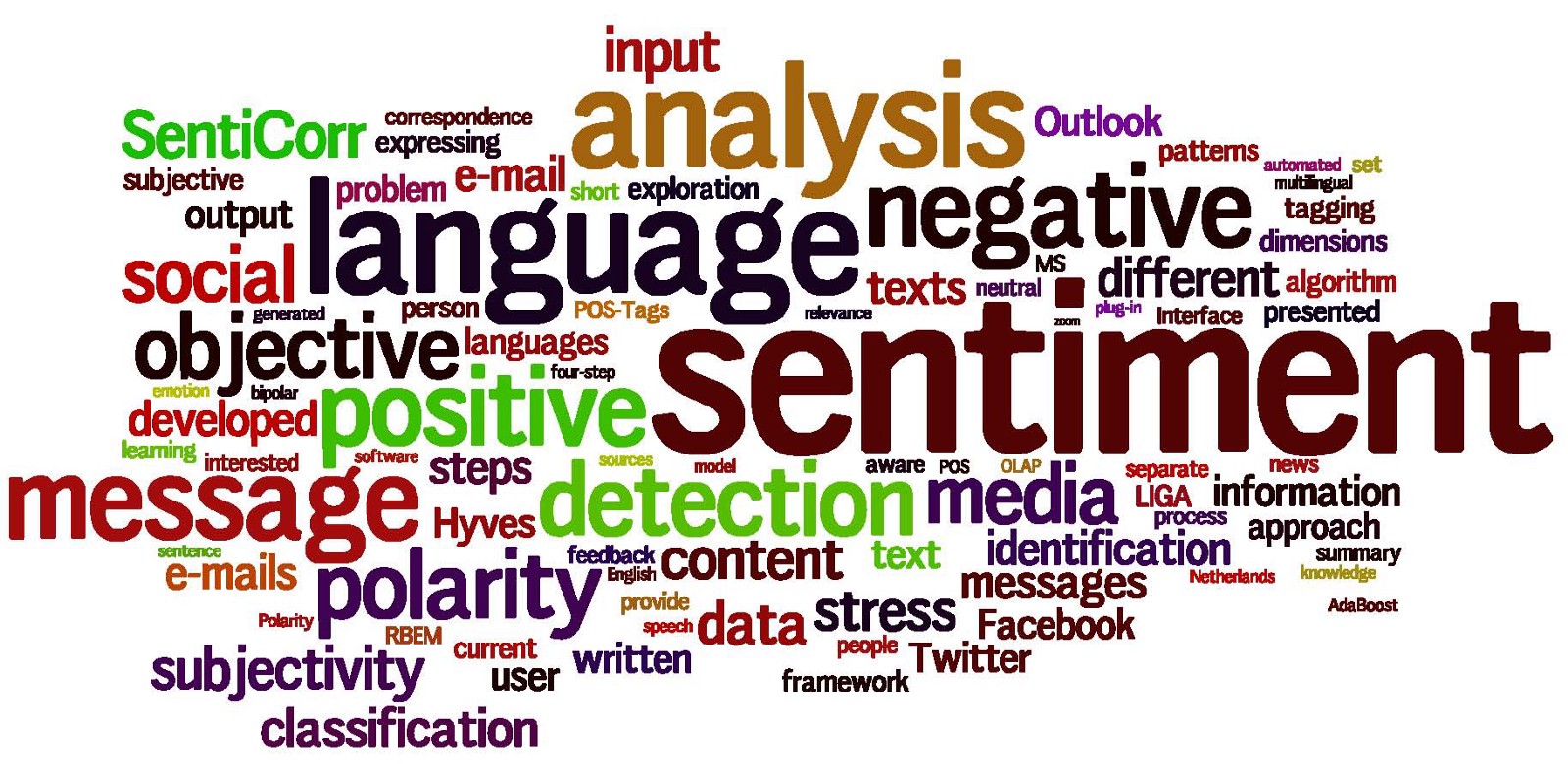Introduction:
Sentiment analysis, also known as opinion mining, has Datasets emerged as a pivotal field within machine learning, aiming to understand and interpret the emotions and attitudes expressed in textual data. Leveraging vast datasets, sentiment analysis models decipher the sentiment behind words, providing valuable insights into public opinion, customer feedback, and social trends. This exploration delves into the realm of sentiment analysis datasets, shedding light on their significance, challenges, and the transformative role they play in developing machine learning models capable of decoding human emotions.
The Significance of Sentiment Analysis:
1. Understanding Human Emotions:
- Sentiment analysis enables machines to comprehend the nuanced spectrum of human emotions expressed in text. This understanding is crucial for businesses, policymakers, and researchers seeking to gauge public sentiment on various issues.
2. Customer Feedback and Reputation Management:
- Businesses utilize sentiment analysis to analyze customer reviews and feedback. By decoding sentiments in reviews, companies can assess customer satisfaction, identify areas for improvement, and manage their online reputation effectively.
3. Social Media Monitoring:
- Social media platforms serve as a rich source of textual data reflecting public opinions and sentiments. Sentiment analysis on social media enables real-time monitoring of trends, brand mentions, and the overall sentiment landscape.
4. Market Research and Product Development:
- Sentiment analysis aids market researchers in understanding consumer preferences and opinions. By analyzing sentiments expressed in reviews and social media, businesses can tailor their products and services to meet customer expectations.
5. Political and Social Analysis:
- Sentiment analysis extends to the political and social domains, providing insights into public opinions on political issues, social movements, and cultural trends. This information is valuable for policymakers and analysts.
Types of Sentiment Analysis Datasets:
1. Product Reviews Datasets:
- These datasets include customer reviews for various products and services. They often come labeled with sentiments, indicating whether the review expresses positive, negative, or neutral opinions.
2. Social Media Texts:
- Social media datasets comprise tweets, posts, and comments from platforms like Twitter, Facebook, and Instagram. Analyzing these datasets allows researchers to understand public sentiments in response to events, products, or trends.
3. Movie and TV Show Reviews:
- Datasets containing reviews of movies and TV shows are commonly used for sentiment analysis. These datasets help in assessing audience reactions and preferences in the entertainment industry.
4. Customer Support Interactions:
- Customer support chat logs and emails provide a unique dataset for sentiment analysis. Analyzing customer interactions helps businesses gauge satisfaction levels and identify areas for improvement in their support services.
5. News Articles and Headlines:
- Sentiment analysis on news articles and headlines provides insights into public sentiments towards current events, political developments, and global issues.
Challenges in Sentiment Analysis Datasets:
1. Contextual Ambiguity:
- Textual data often contains nuances and contextual ambiguity that make sentiment analysis challenging. Sarcasm, irony, or cultural references can lead to misinterpretations by machine learning models.
2. Negation and Double Negation:
- Negations in language, such as “not good” or “not bad,” require models to grasp the subtle reversal of sentiment. Double negations can add complexity, making accurate sentiment classification more intricate.
3. Domain-Specific Challenges:
- Sentiment analysis models trained on one domain may struggle when applied to another. Adapting models to different domains, industries, or cultural contexts requires additional training on domain-specific datasets.
4. Handling Multilingual Texts:
- Sentiment analysis datasets may involve texts in multiple languages, adding a layer of complexity. Models need to be proficient in handling multilingual sentiments to provide accurate analyses.
5. Imbalanced Datasets:
- Imbalances in sentiment labels (e.g., a higher number of positive reviews compared to negative ones) can impact model performance. Ensuring a balanced representation in datasets is crucial for accurate sentiment classification.
Opportunities in Leveraging Sentiment Analysis Datasets:

1. Fine-Tuning Pre-trained Models:
- Pre-trained language models, such as BERT and GPT, can be fine-tuned on sentiment analysis datasets to leverage their contextual understanding of language. Fine-tuning allows models to adapt to specific sentiment-related tasks.
2. Aspect-Based Sentiment Analysis:
- Going beyond overall sentiment, aspect-based sentiment analysis focuses on sentiments related to specific aspects or features. This approach provides more granular insights, especially in product reviews or customer feedback.
3. Real-Time Sentiment Monitoring:
- Sentiment analysis datasets enable the development of models for real-time sentiment monitoring on social media and other platforms. Businesses can track sentiment shifts and respond promptly to emerging trends.
4. Deep Learning Architectures:
- Deep learning architectures, such as recurrent neural networks (RNNs) and transformers, excel in capturing sequential dependencies in textual data. These architectures enhance the performance of sentiment analysis models, especially in long and context-rich texts.
5. Cross-Domain Sentiment Analysis:
- Cross-domain sentiment analysis involves training models on datasets from one domain and applying them to another. Advances in transfer learning techniques enhance the adaptability of sentiment analysis models across diverse domains.
Techniques for Analyzing Sentiment Analysis Datasets:
1. Tokenization and Embeddings:
- Tokenization breaks down text into tokens, and embeddings represent words as vectors. These techniques capture semantic relationships between words, enhancing a model’s ability to understand contextual nuances.
2. Machine Learning Classifiers:
- Traditional machine learning classifiers, such as Support Vector Machines (SVM) and Naive Bayes, can be employed for sentiment analysis. These models learn patterns in labeled datasets to classify sentiments in new text.
3. Deep Learning Models:
- Deep learning models, including recurrent neural networks (RNNs) and transformers, are powerful for capturing sequential dependencies in text. These models excel in learning intricate patterns and long-range dependencies in sentiment analysis.
4. Transfer Learning:
- Transfer learning involves pre-training models on large datasets and fine-tuning them on specific tasks. This approach is effective for leveraging pre-existing knowledge and adapting models to sentiment analysis datasets.
5. Ensemble Methods:
- Ensemble methods combine predictions from multiple models to improve overall performance. Ensemble techniques, such as bagging and boosting, can enhance the robustness of sentiment analysis models.
Real-World Implications:
1. Brand Sentiment Analysis:
- Businesses use sentiment analysis to assess brand sentiment, helping them understand how consumers perceive their products or services. Positive sentiments contribute to brand loyalty, while negative sentiments may prompt reputation management strategies.
2. Customer Experience Enhancement:
- Sentiment analysis on customer feedback enables businesses to identify areas for improvement in products or services. By addressing customer concerns, organizations can enhance the overall customer experience.
3. Political Opinion Tracking:
- Sentiment analysis on political discourse helps political analysts and parties gauge public opinions. This information is valuable for election campaigns, policymaking, and understanding the political landscape.
4. Stock Market Predictions:
- Sentiment analysis on financial news and social media discussions can contribute to predicting stock market trends. Positive sentiments may indicate bullish markets, while negative sentiments may suggest bearish trends.
5. Public Health Monitoring:
- Sentiment analysis on social media can aid in public health monitoring by detecting sentiments related to health issues. This information is valuable for identifying emerging health trends and public perceptions of healthcare initiatives.
Future Directions in Sentiment Analysis Datasets:
1. Multimodal Sentiment Analysis:
- Future sentiment analysis models may integrate information from multiple modalities, such as text, images, and videos. This approach provides a more comprehensive understanding of sentiments expressed in diverse media.
2. Explainable Sentiment Analysis:
- Enhancements in explainable AI will contribute to making sentiment analysis models more interpretable. This is crucial for building trust in applications where decisions based on sentiment analysis impact individuals or businesses.
3. Continual Learning for Evolving Sentiments:
- Continual learning techniques will become essential for adapting sentiment analysis models to evolving language trends and emerging sentiments. This ensures that models stay relevant and effective over time.
4. Mitigating Bias in Sentiment Analysis:
- Addressing biases in sentiment analysis models is a critical area for future research. Techniques for mitigating biases and ensuring fair sentiment analysis across diverse demographic groups will be a focus of attention.
5. Personalized Sentiment Analysis:
- Future models may aim at personalized sentiment analysis, considering individual preferences and contextual factors. This approach can lead to more accurate and personalized insights in various applications, from recommendation systems to mental health monitoring.
Conclusion:

Sentiment analysis datasets stand at the forefront of machine learning applications, offering a window into the complex and dynamic world of human emotions expressed in text. From shaping business strategies to understanding societal trends, sentiment analysis plays a pivotal role in a variety of domains. While challenges such as contextual ambiguity and domain-specific variations persist, ongoing advancements in machine learning techniques, coupled with the availability of diverse and labeled sentiment analysis datasets, pave the way for more accurate, nuanced, and ethically sound sentiment analysis models. As the field continues to evolve, the decoding of emotions through machine learning promises a deeper understanding of human sentiment, opening new frontiers for applications that can positively impact businesses, society, and individual well-being.


 Afrikaans
Afrikaans Albanian
Albanian Amharic
Amharic Arabic
Arabic Armenian
Armenian Azerbaijani
Azerbaijani Basque
Basque Belarusian
Belarusian Bengali
Bengali Bosnian
Bosnian Bulgarian
Bulgarian Catalan
Catalan Cebuano
Cebuano Chichewa
Chichewa Chinese (Simplified)
Chinese (Simplified) Chinese (Traditional)
Chinese (Traditional) Corsican
Corsican Croatian
Croatian Czech
Czech Danish
Danish Dutch
Dutch English
English Esperanto
Esperanto Estonian
Estonian Filipino
Filipino Finnish
Finnish French
French Frisian
Frisian Galician
Galician Georgian
Georgian German
German Greek
Greek Gujarati
Gujarati Haitian Creole
Haitian Creole Hausa
Hausa Hawaiian
Hawaiian Hebrew
Hebrew Hindi
Hindi Hmong
Hmong Hungarian
Hungarian Icelandic
Icelandic Igbo
Igbo Indonesian
Indonesian Irish
Irish Italian
Italian Japanese
Japanese Javanese
Javanese Kannada
Kannada Kazakh
Kazakh Khmer
Khmer Korean
Korean Kurdish (Kurmanji)
Kurdish (Kurmanji) Kyrgyz
Kyrgyz Lao
Lao Latin
Latin Latvian
Latvian Lithuanian
Lithuanian Luxembourgish
Luxembourgish Macedonian
Macedonian Malagasy
Malagasy Malay
Malay Malayalam
Malayalam Maltese
Maltese Maori
Maori Marathi
Marathi Mongolian
Mongolian Myanmar (Burmese)
Myanmar (Burmese) Nepali
Nepali Norwegian
Norwegian Pashto
Pashto Persian
Persian Portuguese
Portuguese Punjabi
Punjabi Romanian
Romanian Russian
Russian Polish
Polish Samoan
Samoan Scottish Gaelic
Scottish Gaelic Serbian
Serbian Sesotho
Sesotho Shona
Shona Sindhi
Sindhi Sinhala
Sinhala Slovak
Slovak Slovenian
Slovenian Somali
Somali Spanish
Spanish Sundanese
Sundanese Swahili
Swahili Swedish
Swedish Tamil
Tamil Tajik
Tajik Telugu
Telugu Turkish
Turkish Ukrainian
Ukrainian Urdu
Urdu Uzbek
Uzbek Thai
Thai Vietnamese
Vietnamese Welsh
Welsh Xhosa
Xhosa Yiddish
Yiddish Yoruba
Yoruba Zulu
Zulu